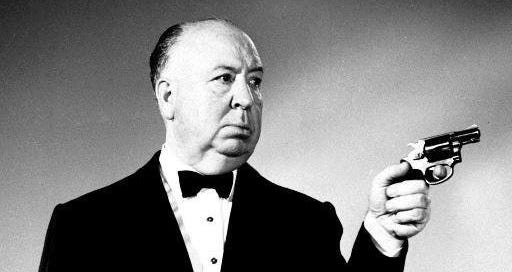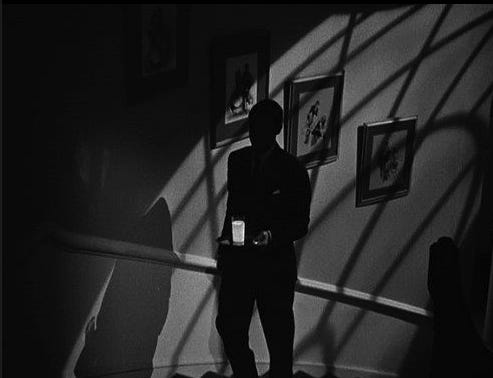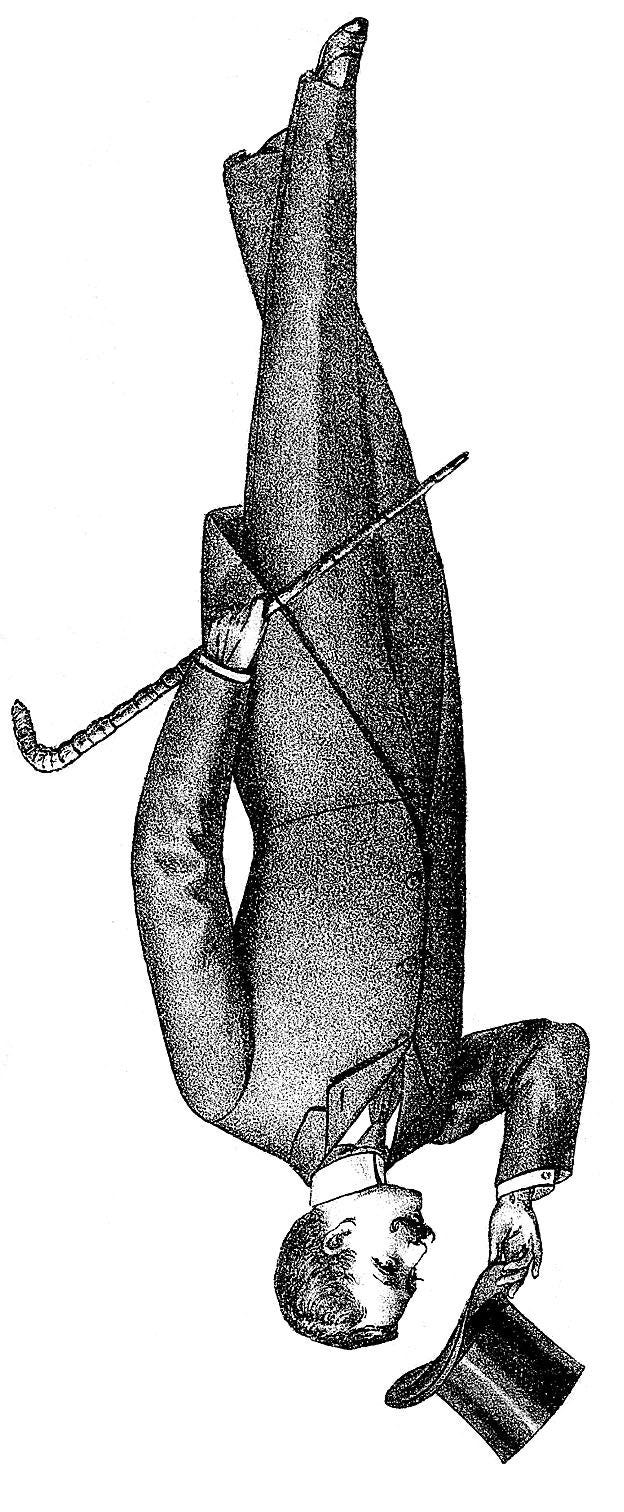Alfred Hitchcock began his film career in 1919 as a title card designer. His first work as director was a British-German film called The Pleasure Garden (1925). The movie was a learning experience for the rookie director.
While working in Germany Hitchcock was influenced by German expressionism. Later, through his membership in the London Film Society he became interested in Soviet montage theory.
The Lodger: A Story of the London Fog (1927) was his first success. Other early accomplishments include The Man Who Knew Too Much (1934), The 39 Steps (1935) and The Lady Vanishes (1938).
By 1939 Hitchcock had achieved international acclaim. Producer David O. Selznick convinced him to move to Hollywood where the English director lived and worked for the rest of his life. Hitchcock’s career spanned six decades ending with Family Plot in 1976.
In this essay, I will discuss the film techniques employed by the “Master of Suspense.” In particular, I will concentrate on how he conveys information including the inner workings of the human mind using visual cues only and how these create suspense.
But first, what is suspense?
Hitchcock once said, “There’s a great confusion between the words mystery and suspense, and the two things are absolutely miles apart.” Mystery such as a whodunit is an intellectual process. It withholds information from the audience leaving them wondering what the movie is all about. There is no emotion to it, and Hitchcock felt that was “wasted footage.”
Suspense, on the other hand, is an emotional process, and “you can only get the suspense element going by giving the audience information,” said Hitchcock. To illustrate this he gives us the now famous bomb theory.
Imagine four people sitting around a table talking about baseball. Five minutes later a bomb goes off. “What does the audience have? Ten seconds of shock,” said Hitchcock. Now imagine the same conversation, but the audience sees the bomb ticking down. “Well, the whole emotion of the audience is totally different because you've given them that information.”
It is the methods by which Hitchcock delivers this information that I will be examining today. In the above example, he’d probably show us the bomb spliced between footage of the people talking. There maybe a clock on the wall reminding us the bomb will soon explode.
But what if the information cannot be so easily revealed? What if the information is an emotion or the motivation of a character?
Hitchcock uses a method he called pure cinema, or telling a story by using only pictures. Speaking about a character, he said, “You can make him look at one thing and look at another. Without speaking you can show the mind at work, comparing things.” For example, a man first looks at a burlap sack and then at a body. We understand he is contemplating putting the body in the sack.
Soviet filmmaker Lev Kuleshov pioneered this technique when he spliced together the image of a man with images of a bowl of soup, a coffin and a beautiful woman in an attempt to see if he could get viewers to attribute certain emotions (hunger, sadness, lust) to the otherwise placid man.
Hitchcock took the Kuleshov effect to the next level.
First, there is a close up of a man. Next, the camera shows what he is looking at. For this example, let us say he sees a mother caring for her baby. Finally, the camera cuts back to the man and reveals his reaction. Let’s say he smiles. “Now what is he as a character?” Hitchcock asked. “He’s a kindly man. He’s sympathetic.”
But if we remove the middle piece of footage (the woman and her baby) and replace it with a girl in a bikini. “What is he now? A dirty old man. He’s no longer the benign gentleman who loves babies.”
This is how mere pictures can communicate to audiences who a character is or his motivations and inner workings. Another way is to focus on certain body parts like the hands. Fidgeting hands can show nervousness; or, the way an object is handled can express nefarious intent. Eyes and facial expressions are also important in Hitchcock films.
Dialogue was something to be avoided. He called these moments, “... photographs of people talking, and bears no relation to the art of cinema.” Yet, Hitchcock has quite a bit of dialogue in his films. How does he manage it? With a technique called “watch the listening.”
As the name suggests, the audience watches while the dialogue is given. The dialogue and the footage, therefore, work in conjunction. One gives text and the other subtext.
One method of revealing the subtext is to focus on eyes or hands. As indicated above, fidgeting hands may indicate a person is nervous about the direction the conversation is heading. Eyes may indicate fear of an impending accusation and then relief when the conversation changes course.
Cinematography is also an important part of watch the listening. A dialogue scene may start from a long shot (camera far away) and move to a medium shot and then to a close up as the conversation intensifies. A close up can also change the very meaning of words in certain contexts. It can indicate a person is lying, for example.
The frequency of edits can play a role as well. Long edits can emphasize an emotion or the importance of an object or character. Short edits can draw out the length of a scene that otherwise would be too quick to build sufficient tension.
Hitchcock explains two more editing techniques in this 1964 interview. The first is montage. “Montage means the assembly of pieces of film, which move in rapid succession before the eye to create an idea.” The second is orchestration. “This is size of image put together to create shock. In other words, if it were music it would be tremolos on the violin and suddenly a brass instrument.” These two ideas will be discussed in future essays.
Often Hitchcock reaches past his actors and directs the very audience. He sets up his shots in order to pull their attention toward one thing or another. Close ups are a frequent device for this. Enlarged or prominently displayed objects are another. One particularly ingenious example comes from Suspicion (1941). A light was placed in a glass of milk to set it off from the darker background.
Finally, Hitchcock filmed his actors at certain angles to suggest motivation or to accentuate emotion. A high angle might communicate intent to deceive. A straight on shot adds weight to an already emotional outburst. This idea will become more apparent as the film study proceeds.
On August 25th, 2022 I will review various Hitchcock films with special attention on these techniques.





